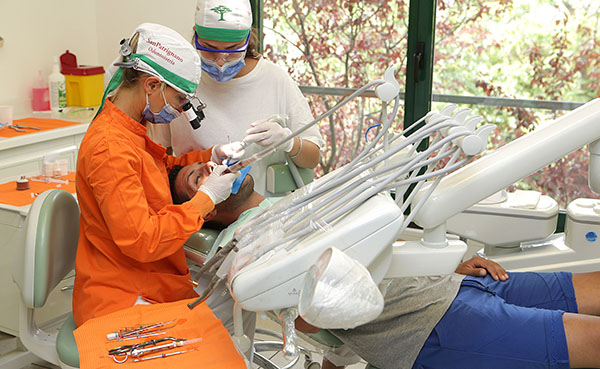Employment and vocational trainings provide three essential benefits to the TC. The first is the promotion of self-efficacy. Residents achieve mastery on a day-to-day basis from carrying the competence to directly benefit their community. According to motivational theory, generating self-mastery leads to increased self-esteem. This is suggested to be one of the greatest aspirational goals in life, thereby offering a greater depth of dignity and achievement in recovery goals once attained 51 52. When an individual believes they are powerless in their life, they are less likely to form affective commitments or attempt to enact change 53. SanPa therefore integrates structural frameworks to facilitate the generation of self-mastery, such as involvement in work, education, or peer-mentoring. As an example, residents in the agricultural sectors take active roles in sustaining the basic sustenance of others. Being able to offer the fruits of one’s hard work for the nourishment of those in their community not only increases self-efficacy, yet it also offers a unique layer of human connection that further strengthens social cohesion. Residents at SanPa are also gain offered opportunity to fill gaps in previously interrupted education, ultimately yielding mastery and increased vocational opportunities. Since SanPa’s founding, over 1,700 students have pursued diplomas – 709 have obtained middle-school diplomas, 305 professional school qualifications, 648 high school diplomas, and 47 university degrees. In addition, nearly 200 people every year attend vocational training courses and obtain professional certifications. Such accomplishments are significant drivers for improved self-esteem in overall recovery.
The second benefit is that of practicality. Contributions by each resident help ensure accessibility of the community for those who need it most. Because SanPa is free of cost, a system is required to both maintain the livelihood of the residents and support therapeutic initiatives. In order to achieve this, products are created by the community that not only nourish the residents, yet also comprise a prolific, commercial enterprise. With over 500,000 liters of wine sold per year and 400 liters of milk produced each year, SanPa is recognized for its products (e.g. meats, cheeses, wine) sold at retailers across the world. These enterprises constitute over 50-60% of its annual funding source 54. In fact, survey feedback gathered from residents who had completed at least 14 months at SanPa found that this involvement both increased perceptions of group cohesion, as well as a sense of personal dignity 55.
- 51. Maslow, A. H. (1943). A theory of human motivation. Psychological review, 50(4), 370.
- 52. Bandura, A. (1982). Self-efficacy mechanism in human agency. American psychologist, 37(2), 122.
- 53. Pearce, S., & Pickard, H. (2010). Finding the will to recover: philosophical perspectives on agency and the sick role. Journal of medical ethics, 36(12), 831-833.
- 54. San Patrignano Community. (n.d.). Retrieved May 20, 2020, from https://www.sanpatrignano.com/
- 55. Baraldi G., Piazzi G. (1998). The upside-down community. Children in San Patrignano. FrancoAngeli 7: 581.


